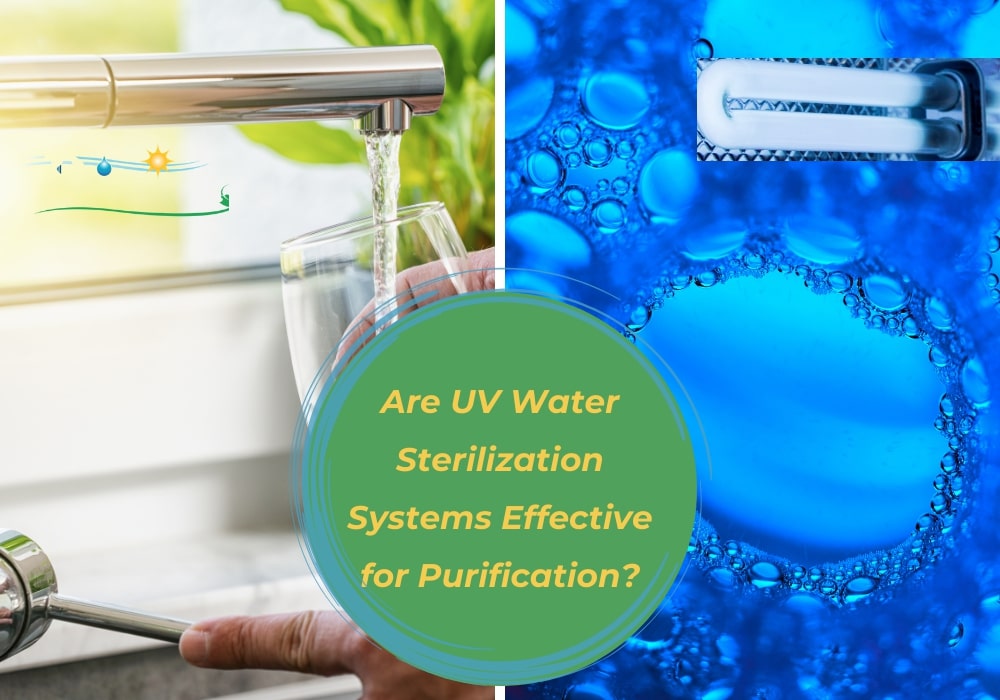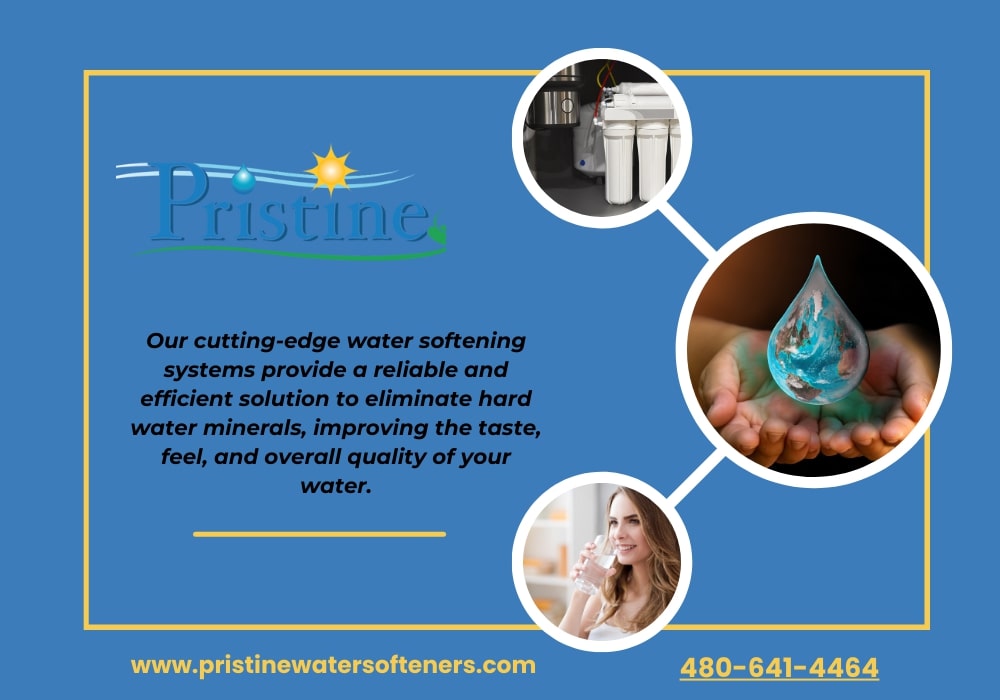UV water sterilization uniquely kills harmful pathogens while preserving the natural taste and essential minerals in drinking water.
Clean and safe drinking water is vital to overall health and wellness. One of the emerging solutions is the UV water sterilization system, which uses ultraviolet light to kill bacteria, viruses, and any other microorganisms and pathogens in water. This chemical-free process is gaining popularity because of its simplicity, efficiency, and effectiveness.
What is UV Light Technology?
UV light technology uses ultraviolet radiation to disinfect surfaces, air, and water by destroying bacteria, viruses, and other harmful microorganisms.
Ultraviolet (UV) light is a form of electromagnetic radiation between 100 and 400 nanometers, shorter than visible light and more prolonged than X-rays. It’s divided into three wavelength categories:
- Ultraviolet UV-A.
- Ultraviolet UV-B.
- Ultraviolet UV-C. UV-C (200-280 nm) is the best for sterilization.
UV-C can enter the cells of microorganisms like bacteria, viruses, and protozoa and disrupt their DNA and RNA so they can’t replicate and are harmless.
How does UV Sterilization Work in Water Purification Systems?
In a UV water sterilization system, water passes through a chamber and is exposed to UV-C light. The UV light inside the chamber damages the genetic material of pathogens by altering their nucleic acids.
This prevents them from reproducing or causing infection. Unlike chemical methods of disinfection, UV sterilization doesn’t add anything to the water, so it’s a chemical-free way to purify water.
UV systems don’t remove physical impurities like sediment or chemicals but ultraviolet light is great at neutralizing pathogens that can cause diseases like E. coli, salmonella, and giardia. The process is fast and only takes seconds of exposure of organisms to ultraviolet water and UV light to eliminate and sterilize.
Applications of UV Sterilization
Household Water Purification: UV systems are installed in homes, especially in rural areas where well water or untreated sources are used. These systems provide an extra layer of protection against waterborne diseases.
Industrial Water Treatment: Industries use UV sterilization to ensure microbe-free water is used in manufacturing, processing, and cooling.
Medical: Hospitals and laboratories use UV to disinfect water for medical procedures and sanitation to prevent contamination.
Aquariums and Fish Farms: UV sterilization maintains pathogen-free water environments for aquatic life.
In all these settings, a UV water light sterilization filter system provides an efficient and environmentally friendly method of ensuring safe water quality without altering water quality or its chemical composition.
How do UV Water Sterilization Systems Purify Water?
UV water sterilization uses ultraviolet light to kill germs and bacteria, making your drinking water safe and clean.
Step-by-Step Process of How UV Light Neutralizes Pathogens
Water Enters the UV Chamber: In a UV water sterilizer, water first enters a special chamber exposed to intense ultraviolet (UV) light, usually in the UV-C range.
Pathogens Exposed to UV Light: As the water flows through the chamber, any nasty bugs present are exposed to the UV-C light from the bulb. Exposure has to be long enough to get through the cell walls of the microorganisms.
DNA Disruption: The UV-C light gets through the DNA or RNA of the pathogens. This damages the nucleic acids of the bad guys, so they can’t replicate and spread.
Pathogens Neutralized: Once their DNA is disrupted, the microorganisms can’t multiply, so they’re neutralized. They can no longer harm humans.
Purified water Exits the System: After going through the UV light, the sterilized water exits the system bug-free. It’s chemical-free and fast, usually taking only seconds to treat the water.
What Are The Types of Microbes Killed by UV Light?
A UV light water sterilization system can kill many types of harmful microorganisms.
Bacteria: E. coli, Salmonella, Legionella, and other common bacteria can be killed, reducing the risk of waterborne bacterial illness.
Viruses: UV systems target waterborne viruses like Hepatitis A, Norovirus, and Rotavirus, which can cause severe illness.
Protozoa: Giardia lamblia and Cryptosporidium resist chlorine but can be killed quickly with UV-C light.
Non-Chemical Benefits
- Chemical-Free Process: A significant advantage of UV water sterilization systems is that they don’t add chemicals to the water. No chlorine or other additives, pure water without changing the taste or smell.
- Environmentally friendly: Since no chemicals are involved, UV water sterilization systems have less environmental impact than traditional methods like chlorination, which can produce by-products.
- Broad Spectrum: UV systems can kill many pathogens without needing different chemical treatments. This makes UV-light water sterilization systems very effective in various water sources.
- Low Maintenance and Cost Effective: UV systems require minimal maintenance, just replacing the UV bulb, making them a cost-effective and long-term solution for water purification.
Cost And Low Maintenance
UV lamps and water sterilization systems are cost-effective to install and maintain low maintenance compared to other purification methods. The main cost is in the initial setup and periodic replacement of the unit and UV bulb, which can last up to a year, depending on usage.
Unlike filtration systems that need frequent filter changes or chemical treatments that require ongoing purchases of chemicals, UV systems only require regular cleaning and bulb replacement to keep costs low.
Fast And Energy Efficient Purification
The UV light water sterilization system purifies water in seconds. As water flows through the UV chamber, harmful pathogens are neutralized. This rapid method makes it efficient for household and commercial use.
Plus, it consumes minimal energy, equivalent to a standard household light bulb. This energy-efficient, ultraviolet light water purification is perfect for those who want to keep their utility bills and environmental footprint low.
Household And Commercial Use
UV is safe for tiny homes and extensive facilities. In homes, a UV for water treatment and sterilization system can provide families with clean and safe drinking water and protection against waterborne pathogens.
For larger applications such as industries, hospitals, and municipal water systems, UV can be integrated into more extensive operations to purify large volumes of water. The versatility of UV light for water treatment and sterilization systems makes them a solution for all your water treatment and purification needs.
The UV water sterilization system is fast, energy-efficient, and eco-friendly for homes, businesses, and industries.
How Do You Maintain and Upkeep UV Water Sterilization Systems?
Regular maintenance involves cleaning the quartz sleeve, replacing the UV lamp annually, and checking system components to ensure optimal performance and effective water purification.
Routine Maintenance Tips:
Clean the Quartz Sleeve: Inspect the quartz sleeve monthly for sediment or buildup that can block UV light. Clean it regularly to ensure effective UV penetration.
Check Power Supply: Ensure the power supply to the UV system is functioning without interruptions, as consistent UV energy is crucial for proper disinfection.
Monitor Water Flow Rate: Verify that the water flow rate is within the system’s recommended range, as a high flow rate can reduce the efficiency of the UV disinfection process.
Replace UV Lamp Annually: Even if the lamp is still emitting light, UV output decreases over time. Replace the lamp every 12 months to maintain optimal performance.
Inspect System Components: Regularly check other system components, such as filters and O-rings, for wear and tear, and replace them as needed for efficient operation.
Bulb Replacement Schedules And Costs:
The germicidal ultraviolet lamps in UV water sterilization systems have a finite lifespan, typically around 9 to 12 months of continuous use. After this time, the germicidal ultraviolet water lamps lose their ability to emit enough heat and UV radiation to sterilize the water effectively.
It’s essential to adhere to manufacturer guidelines regarding lamp life to ensure that your UV system lamp and filter continue functioning effectively. Keep spare lamp bulbs and filters on hand to avoid disruptions in your water purification process.
Is UV Water Sterilization Right for You?
When deciding if a UV water sterilization system is right for your whole house or business, consider the quality of your water supply and the presence of microorganisms like bacteria and viruses
Key Factors to Consider When Choosing UV Sterilization:
UV systems and filters are ideal for those seeking a chemical-free way to purify water, as they do not alter the taste, odor, or pH of the water. It is a unique and rapid method. They are particularly beneficial for homeowners relying on healthy water or rural areas where reverse osmosis or other water filtration methods may not be sufficient.
Transform Your Water Quality With Pristine Water Softeners!
Tired of dealing with hard water and its damaging effects on your home’s appliances and plumbing? Pristine Water Softeners is here to help! Our cutting-edge water softening systems provide a reliable and efficient solution to eliminate hard water minerals, improving the taste, feel, and overall quality of your water.
From enhancing the lifespan of your appliances to giving you softer skin and cleaner clothes, our systems are designed to make a difference.
Don’t wait until hard water causes more damage—experience the benefits of Pristine Water Softeners today! Contact us now for a free consultation and take the first step toward better water quality for your home.



